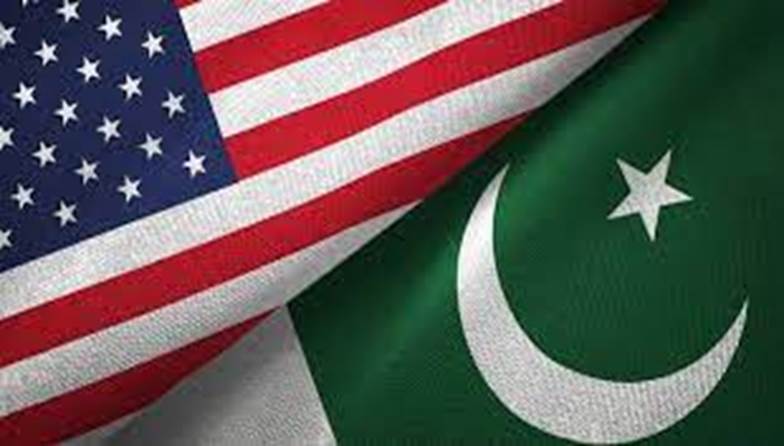
Fortunately, people-to-people relations between the two countries have survived the roller coaster nature of government-to-government ties. Both countries will benefit from investing in areas that enjoy popular support in Pakistan. For instance, IT professionals would want to strengthen their links with Silicon Valley. Pakistani students would welcome enhanced opportunities for higher education in American universities. And the US healthcare system has been a preferred destination for Pakistani physicians for several decades
US Has Already Chosen Its Strategic Partner in South Asia: India
By Aizaz Ahmad Chaudhry
Pakistan
At the outset, it is important to recognize that the US has already chosen its strategic partner in South Asia: India. The US requires India’s cooperation in pursuit of its priority national security objective: strategic competition with China and containing the latter’s economic rise. The US might perceive Pakistan to be a hurdle in two respects: its close friendship with China and its mutually hostile ties with India. This bigger picture is not likely to change soon.
To complicate matters, perceptions about Pakistan in the US and the latter’s image in Pakistan have been deeply bruised by the US-led ‘war on terror’. Many Pakistanis believe that America dragged Pakistan into a war that was not ours, one which caused enormous human and financial losses to our country. There is a view that America befriends Pakistan only when it requires help to advance its security agenda. For its part, the US perceives Pakistan as a country that impeded its military victory in Afghanistan by providing sanctuaries to the Taliban. US officialdom also accused Pakistan of playing a double game.
Nevertheless, the US, it appears, would still like to engage with Pakistan for two reasons. First, it would not like to see Pakistan completely slip into China’s sphere of influence. Secondly, the US might adopt a more balanced approach to South Asia because of India’s tendency to exercise its strategic autonomy, including ties with America’s rivals, such as Russia.
However, the process of boosting ties with the US will be incremental, with no likelihood of high-level structured engagement at this stage. Nor is any major initiative expected from either side.
Fortunately, people-to-people relations between the two countries have survived the roller coaster nature of government-to-government ties. Both countries will benefit from investing in areas that enjoy popular support in Pakistan. For instance, IT professionals would want to strengthen their links with Silicon Valley. Pakistani students would welcome enhanced opportunities for higher education in American universities. And the US healthcare system has been a preferred destination for Pakistani physicians for several decades.
Meanwhile, US agriculture experts are held in esteem for their contribution to creating crop varieties in Pakistan in the early life of the country. Even today, agriculture remains a potential area of bilateral cooperation. Corporate America might also want to invest in Pakistan’s rich mines and minerals industry, particularly in Balochistan.
It would be in our interest to attract investments into the country from the West to build their stakes in the stability of Pakistan. This can be done by facilitating further people-to-people ties and opening new special windows or economic zones for businesses from the West with incentives comparable to those offered to any other foreign investor in Pakistan.
The revival of close economic relations with the US should not be a zero-sum exercise in the context of Pakistan’s ties with China, which remain deep-rooted. It would be a folly to view these two important relationships as an either-or choice for Pakistan. It is heartening that the leadership of the US and China have announced that there will not be another Cold War and that they would not like to see the world divided into camps.
Pakistan’s pivot to geo-economics will also be facilitated if we maintain close ties with all countries, including the US and China, to help Pakistan bolster its economic growth and development. Those who argue that Pakistan should pick its side and not sail in two rival boats are not factoring in the point that in a multipolar world, multi-alignments are the order of the day.
In seeking to enhance our relations with the US, it would be important to reorient this bilateral relationship from a counterterrorism and security-centric angle to the mutually beneficial fields of trade and investment, underpinned by strong people-to-people ties.
China, which has been a reliable development partner all these years, is not likely to resent Pakistan’s close economic ties with the US. Yet, it would be in our interest to keep Chinese and other investors in Pakistan on board with our desire to diversify the sources of investment in the country. The latter would also be better served by adopting transparency and equal opportunity approach for all investment projects.
The Special Investment Facilitation Council has opened an attractive ‘single window’ for investments by facilitating entrepreneurs in the sectors of agriculture, mines and minerals, IT, and energy. It would be useful if, besides investment partners from the Gulf countries, corporate America also took advantage of the SIFC to invest in Pakistan, given its high-dividend market.
(The writer is a former foreign secretary and chairman of Sanober Institute Islamabad. Dawn)

